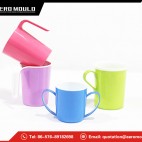Begin drying any and all materials that got wet. Do this as soon as possible. After the floodwaters have receded, water-soaked building materials and household items can be a significant ongoing source of moisture, promoting the growth of mold. They should be rapidly dried or removed from the building if possible. For severe moisture problems, use fans and dehumidifiers, and move wet items away from walls and off floors. Check with equipment rental companies or restoration firms to see if you can rent fans and dehumidifiers. However, to avoid spreading mold spores, do not operate fans if visible mold is already present.
3. Remove and dispose of mold-contaminated materials. Look for mold on porous items that may have absorbed moisture including sheet rock, insulation, plaster, carpet/carpet pad, ceiling tiles, wood (other than solid wood), and paper products. If you see evidence of mold, these items should be removed, bagged and thrown out. Porous materials that may have been in contact with sewage should also be bagged and thrown away. Non-porous materials can be saved if they are properly cleaned and dried and then kept that way. 4. Clean non-porous or semi-porous items. Mold can grow on materials like hard plastic, concrete, glass, or metal but it can usually be removed with careful cleaning. Solid wood items can also be salvaged through cleaning, if they are structurally sound. Bear in mind that mold spores and particles can cause health problems even if theyre dead. For that reason, when you clean an item, the objective is to capture and remove the mold contamination. For heavily contaminated items, begin by using a HEPA vacuum (not a conventional household vacuum or shop vac) to remove as much contamination as possible.
If you cant get a HEPA vacuum, carefully damp wipe the item, to remove as much surface contamination as possible. Rinse wipes often with clean water. Dispose of your wipes and rinse water frequently and properly theyll be contaminated with mold. After HEPA-vacuuming or damp wiping, thoroughly scrub all contaminated surfaces. Use a stiff brush, hot water, and a non-ammonia soap/detergent or commercial cleaner. Collect excess cleaner/cleaning water a wet/dry vacuum, mop or sponge. Rinse the surface or item and the clean-up area -- with clean water. Collect the excess rinse water, and dry everything as quickly as possible.
https://www.mould-supply.com/product/thin-wall-mould/food-storage-container-mould/
3. Remove and dispose of mold-contaminated materials. Look for mold on porous items that may have absorbed moisture including sheet rock, insulation, plaster, carpet/carpet pad, ceiling tiles, wood (other than solid wood), and paper products. If you see evidence of mold, these items should be removed, bagged and thrown out. Porous materials that may have been in contact with sewage should also be bagged and thrown away. Non-porous materials can be saved if they are properly cleaned and dried and then kept that way. 4. Clean non-porous or semi-porous items. Mold can grow on materials like hard plastic, concrete, glass, or metal but it can usually be removed with careful cleaning. Solid wood items can also be salvaged through cleaning, if they are structurally sound. Bear in mind that mold spores and particles can cause health problems even if theyre dead. For that reason, when you clean an item, the objective is to capture and remove the mold contamination. For heavily contaminated items, begin by using a HEPA vacuum (not a conventional household vacuum or shop vac) to remove as much contamination as possible.
If you cant get a HEPA vacuum, carefully damp wipe the item, to remove as much surface contamination as possible. Rinse wipes often with clean water. Dispose of your wipes and rinse water frequently and properly theyll be contaminated with mold. After HEPA-vacuuming or damp wiping, thoroughly scrub all contaminated surfaces. Use a stiff brush, hot water, and a non-ammonia soap/detergent or commercial cleaner. Collect excess cleaner/cleaning water a wet/dry vacuum, mop or sponge. Rinse the surface or item and the clean-up area -- with clean water. Collect the excess rinse water, and dry everything as quickly as possible.
https://www.mould-supply.com/product/thin-wall-mould/food-storage-container-mould/

コメント